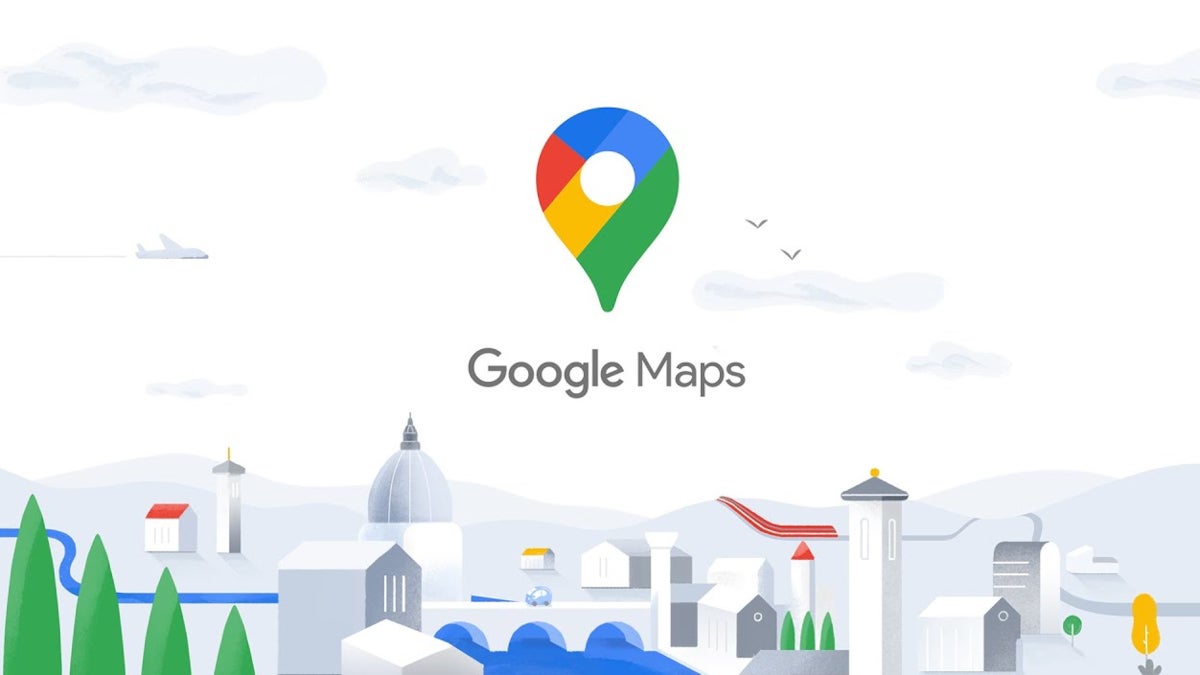Google Maps Usage Statistics
By RG team · 10 min read
Last Updated on June 6, 2023
Wait a minute...

Introduction

Google Maps is arguably the most widely used navigation application worldwide, with millions of people relying on it every day to navigate the world, locate businesses, and explore new places. As the world becomes increasingly driven by technology, Google Maps is at the forefront of enabling people to reach their destinations without getting lost.
In this article, we will dive into the world of Google Maps usage statistics and reveal some interesting and amazing facts about its usage that you probably didn't know. We will look into its popularity, features, and functionalities, as well as its practical uses for businesses and individuals alike.
But first, let's talk about why Google Maps stands head and shoulders above other navigation apps.
Why Google Maps is the King of Navigation Apps
Google Maps is the most popular navigation app in almost every country in the world, according to recent usage statistics. This is due to several reasons, starting with its accuracy, reliability, and versatility.
Unlike other navigation apps, Google Maps offers the most comprehensive and updated street maps, satellite maps, and terrain maps, covering more than 220 countries and territories worldwide. This makes it an indispensable tool for anyone traveling to unfamiliar places, whether by foot, car, or public transportation.
In addition, Google Maps provides real-time traffic information and alternative routes to avoid congestion and save time, making it an ideal app for commuters. It also offers integrated features such as Street View, which lets users see the actual surroundings of any location in 360 degrees, and indoor maps, which provides details of public buildings and attractions such as airports, museums, and shopping malls.
Google Maps is also an essential tool for local businesses, as it helps them connect with customers and increase their visibility online. Business owners can claim their Google Maps listing and add photos, reviews, and other details to make their business stand out and attract more customers.
Overall, Google Maps is the leading navigation app globally due to its accuracy, reliability, and versatility, making it the go-to app for millions of people worldwide.
Google Maps vs Apple Maps: A User Base Comparison
While Google Maps may be the most popular navigation app worldwide, how does it compare to its closest rival, Apple Maps? According to recent statistics, Google Maps has a significantly larger user base than Apple Maps, with an estimated 154.4 million users per month compared to Apple's 62 and 66 million users. This suggests that Google Maps has a ~56% market share compared to Apple Maps' ~44% market share in the navigation app market.
One reason behind Google Maps' dominance could be attributed to its availability across different smartphone platforms such as Android and iOS. While Apple Maps is only available on iOS devices, Google Maps is available on both Android and iOS devices, making it accessible to more people.
Another factor could be Google Maps' features and functionalities, such as real-time traffic updates, street view, and public transportation features. These features make it a comprehensive navigational tool for anyone, whereas Apple Maps' features are more limited in scope.
However, this competition between the two giants is not necessarily a bad thing for the consumer, as it drives innovation, competition, and pushes both apps to enhance their features and functionalities to cater to the market's needs better.
Overall, while Google Maps dominates the global market, Apple Maps still has a significant user base, and both apps have their unique features and functionalities that make them appealing to different users.
Who Uses Google Maps and Why?

While it's clear that millions of people worldwide use Google Maps daily, what exactly drives people to rely so heavily on this navigational tool? According to statistics, nearly 77% of smartphone users regularly use navigation apps, and out of those, 67% of users prefer Google Maps over other navigation apps such as Waze and Apple Maps.
One reason behind Google Maps' popularity could be its ease of use and reliability, which make it a must-have app for anyone, whether they are commuting to work, traveling to a new city, or exploring their own neighborhood. Its extensive features and functionalities, such as real-time traffic updates, alternate routes, and public transportation information, make it an essential tool for anyone navigating their way around.
Another reason could be the app's broad target audience. According to Google, the demographic targeting for Google Maps is broad because it's a tool everyone can use. Additionally, 73% of the target audience plays online games at least once per month, which includes mobile gamers, making Google Maps a go-to app for these users as well.
Furthermore, Google Maps has made it easier for businesses to connect with their customers through its business listing feature. Business owners can claim their listing and add details such as photos, reviews, working hours, and contact info. This has made it easier for users to find and connect with businesses they are interested in.
In summary, Google Maps is popular among a wide range of users due to its ease of use, reliability, extensive features and functionalities, and its ability to connect businesses with their customers.
The Benefits of Using Google Maps for Businesses
As mentioned earlier, Google Maps is not only useful for individuals but also for businesses, especially those with a brick-and-mortar presence. A listing on Google Maps can be seen as a virtual storefront, providing customers with vital information such as location, business hours, and contact details.
Furthermore, Google Maps offers various features and functionalities that businesses can take advantage of to enhance their online presence and attract more customers. These include:
Google My Business: A free tool that lets businesses manage their online presence across Google's suite of platforms, including Google Maps. Business owners can add photos, respond to reviews, and even create posts to communicate with customers.
Google Maps Ads: Businesses can advertise on Google Maps by creating location-based ads that can appear when users search for relevant keywords.
Google Maps API: Businesses can use Google Maps' API to embed customized maps on their website, providing visitors with directions to their physical location.
In addition, Google Maps also offers features such as Local Guides and Google Street View, which businesses can use to showcase their products and services and give customers a virtual tour of their store.
Overall, Google Maps is an excellent tool for businesses looking to enhance their online presence and attract more customers. By utilizing its various features and functionalities, businesses can create a strong online presence that can help them stand out in a crowded market.
How Many Websites Use Google Maps?
Given its popularity as a navigation application, it's no surprise that an estimated 5 million active websites use Google Maps in some way. From businesses embedding maps on their website to bloggers sharing their favorite travel destinations, Google Maps is an essential tool used on websites worldwide.
In the United States, the retail industry has the most companies using Google Maps, according to statistics. Meanwhile, the majority of companies using Google Maps are small businesses with 1-10 employees and revenue between 1M - 10M dollars. This suggests that Google Maps is an essential tool for small businesses looking to connect with their customers and promote their brand.
In addition to businesses, Google Maps is also used on a vast array of websites, including government websites, travel blogs, real estate websites, and more. Its versatility and ease of use make it an ideal tool for anyone looking to display maps and locations on their website.
Overall, Google Maps is a versatile and widely used tool that appears on millions of websites worldwide. Its robust functionality and ease of use make it an excellent tool for businesses and individual users alike.
The Future of Google Maps: New Features and Innovations
Google Maps has come a long way since its inception in 2005, constantly evolving and innovating to meet the needs of its users. In recent years, there have been several notable additions to the app's functionalities and features.
One of the most notable additions is the augmented reality (AR) feature, which overlays real-world images with virtual directions. This feature has proven particularly useful for pedestrians navigating through unfamiliar areas, providing them with an immersive experience. In addition, Google Maps has added "eco-friendly" routes, which aim to help drivers reduce their carbon footprint by providing them with alternative routes that are greener and more fuel-efficient.
Moreover, Google Maps has invested heavily in Machine Learning and Artificial Intelligence (AI) to improve its routing algorithms. According to Google, their machine learning models have been tuned to consider a variety of factors such as weather, traffic jams, and accidents that could affect routes and travel times.
Google Maps is also becoming a more interactive and engaging experience, with an increasing number of users creating personalized maps and sharing them with others. This feature enables users to share their favorite travel destinations, restaurants, and landmarks with their friends and family.
Overall, it's clear that Google Maps will continue to be a vital tool for navigating the world in the future, with continued innovation and enhanced features on the horizon.
How Google Maps Changed the Way We Travel
Google Maps has had a profound impact on the way we travel, changing the way we plan our trips and navigate to our destinations. Before the advent of Google Maps, travelers had to rely on paper maps to get around, which were often inconvenient, outdated, and hard to read.
Today, Google Maps has made it easier to plan trips, navigate unfamiliar places, and find new and exciting destinations. Its accessibility and reliability have made it a must-have app for any traveler, whether they are traveling locally or abroad.
Moreover, Google Maps has helped travelers save time and money by providing real-time traffic updates, alternate routes, and public transportation information. This has given travelers more options and flexibility when traveling, allowing them to choose the most efficient and cost-effective means of transportation available.
In addition, Google Maps has made travel more accessible to everyone, regardless of their abilities. Its features such as wheelchair-accessible routes and voice guidance have made it easier for people with disabilities to travel independently and comfortably.
Overall, Google Maps has changed the way we travel, making it more accessible, efficient, and enjoyable. Its impact on the travel industry is undeniable, and it will continue to be an indispensable tool for travelers worldwide.
Conclusion
In conclusion, Google Maps is a widely used and versatile navigational tool that has revolutionized the way we travel and navigate the world. With its accuracy, reliability, and extensive features and functionalities, it has become an essential app for millions of people worldwide.
From businesses looking to enhance their online presence to travelers wanting to explore new places, Google Maps has something to offer for everyone. As it continues to evolve and grow, we can expect more exciting features and innovations that will make our lives easier and more convenient.
Overall, Google Maps is not just a navigational tool but a symbol of how we have embraced technology to make our lives better and easier. And with Google always pushing the envelope and innovating, we can be sure that the future of Google Maps is certain to be extraordinary.



